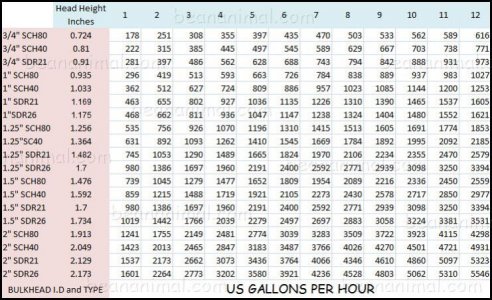Hi T-Hunter
Malcomm -
You mention that on restart that the open channel flushes/gurgles while the full siphon remains locked. Unfortunately, once the flushing is occurring then you have alleviated a great deal of the pressure (hydraulic head) on the full siphon - so it can then never purge itself.
In the case where you then close the secondary (open channel) line - you can accomplish it. This is REALLY good news. By doing this you put enough pressure on the full siphon to kick it in. Even with the back up engaged.
In your case (due to the T) and horizontal connect into the skimmer, you have a challenging purge - but not to challenging since you have demonstrated that it will indeed purge. So you would need to figure out how to give it more advantage. These are the things I would try in order:
1. Be sure that the full siphon line is a small amount (no more than 1/2 inch) below the water level in the sump.
Adjusted to approx 1/2". Was some 6-7"
Actually made no difference but the theory makes sense so I'm happy with that change.
2. Drill a couple of 1/8" holes in the full siphon line just above the water level. This will help get it started - but obviously water will flow out of these holes - under a lot of pressure once it starts. Be sure that they are directed in a way that you can live with in the sump.
Not going to do this due to other results - read on
3. Probably not an option for you ... but if you could place the full siphon line much lower than the open channel line it give you more time (as the water is rising) as well as more hydraulic head. This could give the full siphon a chance to kick in faster before the flow takes hold in the open channel
Due to vagaries of drilling glass, its between 1/4 - 3/8 lower. can't change it without re-drilling larger holes. Not really an option.
4. A costly approach ($100) was suggested to me by afgun for my system: see
http://www.plastomatic.com/arv.html. These are purge devices. You would put this at the top your downpipe in place of the cap. The pipe would operate as an open channel with no water in it. Then as the water came up the float would engage and close the air line thus converting it to a full siphon. It would not highly reccomend this to you since I have never tried it. They are about $100. And you may need to be strategic with where it is placed. So I may just want to igmore this one altogether since this will liekly lead to even more complex engineering to get to work. But in theory it is there.
This might solve the problem but I'm not really prepared to explore it at this stage.
That is what my best guess is on what is going on and a few ideas on how to possibly solve it.
I hope one of these works - let us know what you settle on.
OK a weekend of cutting and trimming PVC. A total bodge job held together with thread tape and Gaffa tape to see what happens with different idea.
* Installed a bigger pump to see if more head pressure would help. It did a bit but nothing startling.
* Trimmed the excess of the pipes to approx 1/2" below sump water level. Again no difference at all.
Lots of playing with different settings and paying attention to what's going on shows that on a power off, the siphon line is sucking back the water from the skimmer branch. It then has a hell of a time trying to purge that air as well as the sump line. During this period the open channel kicks in as well as the emergency and empties the weir. This is all a matter of seconds.
The skimmer branch eventually purges but never regains its original flow, in fact the flow proportion after power off is completely unpredictable. If it starts at all, it may be a dribble or any amount of flow.
Due to the siphoning back from the skimmer, I feel I have three options only. 1/ fit a back siphon prevention valve =- not happy with that as it could fill with coraline etc and fail or 2/ bite the bullet and drill the 4th hole for a dedicated skimmer siphon. As this pipe will be a smaller diameter (3/4 versus 1") combined with the extra flow from the bigger pump, I feel there should be enough head pressure to trigger both full siphons.
3rd option is give up and fit a dedicated pump to drive the skimmer. More electricity etc...
Think I'll drill the hole and give that a go. I can always cap it if it doesn't work.

